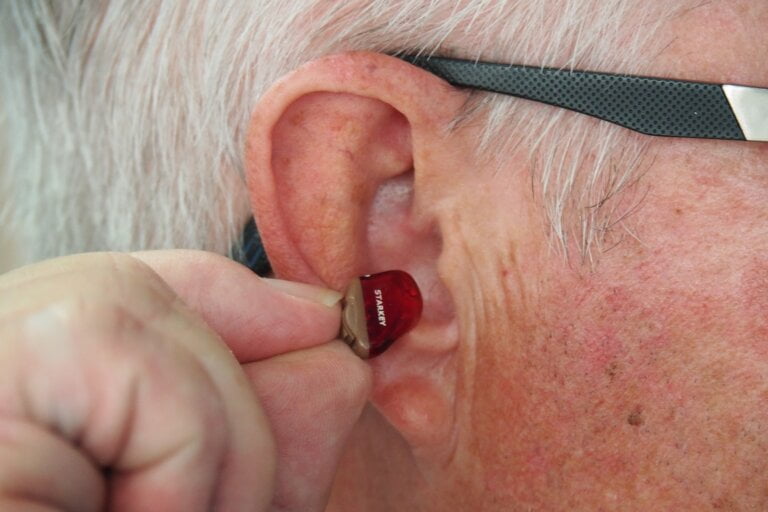Middle Ear Woes: Understanding the Ins and Outs of Otitis Media
Last Updated on 3rd May 2024 by Admin
Otitis Media, commonly known as a middle ear infection, is a prevalent condition that affects individuals of all ages, particularly children. It occurs when the middle ear, the space behind the eardrum, becomes inflamed and infected. This condition can cause discomfort, pain, and even temporary hearing loss. Understanding the ins and outs of otitis media is essential for early detection, proper treatment, and prevention. In this article, we will explore the causes, symptoms, diagnosis, treatment, and prevention strategies for otitis media.
Causes of Otitis Media
Several factors can contribute to the development of otitis media. The condition often arises as a result of bacteria or viruses entering the middle ear. The most common cause is a respiratory infection, such as a cold or flu, which leads to the accumulation of fluid in the Eustachian tubes. These tubes connect the middle ear to the back of the throat and help regulate air pressure in the ear. When these tubes become blocked or dysfunctional, it can result in the growth of bacteria and subsequent infection.
Other potential causes of otitis media include:
- Allergies: Allergic reactions can cause swelling and congestion in the Eustachian tubes, making individuals more susceptible to middle ear infections. Allergies can be triggered by various factors, such as pollen, dust mites, pet dander, or certain foods.
- Smoking: Exposure to secondhand smoke increases the risk of developing otitis media, as it damages the Eustachian tubes and weakens the immune system. It is important to avoid smoking and minimize exposure to secondhand smoke, especially around children.
- Genetic factors: Certain genetic conditions can make individuals more prone to recurrent ear infections. For example, individuals with a cleft palate or Down syndrome may have a higher risk of developing otitis media.
- Bottle-feeding in a lying down position: Feeding infants with a bottle while lying down can increase the likelihood of fluid accumulation in the middle ear. It is recommended to feed infants in an upright position to prevent this.
Symptoms of Otitis Media
Recognizing the symptoms of otitis media is crucial for early intervention. The signs and symptoms can vary depending on the severity of the infection and the age of the affected individual. Common symptoms of otitis media include:
- Ear pain or discomfort: This is one of the most common symptoms of otitis media. The pain can range from mild to severe and may be accompanied by a feeling of pressure in the ear.
- Fluid draining from the ear: In some cases, the infection can cause fluid to drain from the ear. The fluid may be clear, yellow, or even bloody.
- Difficulty hearing or temporary hearing loss: The accumulation of fluid in the middle ear can interfere with sound transmission, leading to difficulty hearing or temporary hearing loss.
- Irritability and changes in behavior, particularly in young children: Infants and young children may exhibit signs of irritability, fussiness, or changes in behavior when experiencing otitis media.
- Fever: Otitis media can sometimes be accompanied by a fever, especially in children.
- Headache: Older children and adults may experience headaches as a result of the middle ear infection.
- Loss of balance or dizziness: In some cases, otitis media can cause a sense of imbalance or dizziness.
If you or your child experience any of these symptoms, it is advisable to seek medical attention for proper diagnosis and treatment.
Diagnosis of Otitis Media
When evaluating a possible case of otitis media, healthcare professionals will typically perform a comprehensive examination. This examination may involve the following:
- Physical examination: The doctor will examine the ears using an otoscope to assess the eardrum’s appearance and detect signs of infection, fluid accumulation, or inflammation. They will look for redness, bulging, or perforation of the eardrum, which are indicative of otitis media.
- Medical history: The doctor will inquire about the patient’s symptoms, previous ear infections, and any relevant medical conditions. It is important to provide accurate information about the duration and severity of symptoms.
- Tympanometry: This test measures the movement of the eardrum in response to changes in air pressure. It helps determine the presence of fluid in the middle ear. Tympanometry can provide valuable information about the status of the Eustachian tubes and the middle ear.
- Audiometric testing: If hearing loss is a concern, audiometric testing may be performed to assess the extent of the hearing impairment. This test measures the individual’s ability to hear sounds at different frequencies and volumes.
Accurate diagnosis of otitis media is crucial for determining the most appropriate treatment plan.
Treatment Options for Otitis Media
The treatment approach for otitis media may vary depending on the severity of the infection and the age of the patient. The following treatment options are commonly recommended:
- Antibiotics: If the infection is caused by bacteria, antibiotics may be prescribed to clear the infection and alleviate symptoms. It is essential to complete the full course of antibiotics as prescribed by the doctor. Antibiotics help kill the bacteria responsible for the infection and reduce the risk of complications.
- Pain relievers: Over-the-counter pain relievers, such as acetaminophen or ibuprofen, can help reduce pain and discomfort associated with otitis media. These medications can also lower fever if present.
- Ear drops: In some cases, ear drops containing antibiotics or steroids may be recommended to address the infection or reduce inflammation. Ear drops are typically used when the infection is localized and not severe.
- Tympanostomy tubes: For recurrent or chronic cases of otitis media, the insertion of small tubes through the eardrum might be necessary. These tubes help drain fluid and equalize pressure in the middle ear. Tympanostomy tubes are often recommended for individuals who experience frequent ear infections or persistent fluid buildup.
It is important to consult with a healthcare professional to determine the most appropriate treatment plan for otitis media.
Prevention Strategies for Otitis Media
While otitis media is not entirely preventable, certain measures can reduce the risk of developing this condition. Here are some preventive strategies to consider:
- Vaccinations: Staying up to date with recommended vaccines can help prevent respiratory infections that can lead to otitis media. The pneumococcal conjugate vaccine (PCV) and the annual flu vaccine are particularly important in reducing the risk of otitis media.
- Avoiding secondhand smoke: Reducing exposure to smoke, whether from cigarettes or other sources, can help protect the Eustachian tubes and minimize the risk of infection. It is important to create a smoke-free environment, especially for children.
- Breastfeeding: Breastfeeding has been associated with a lower incidence of ear infections in infants. Breast milk contains antibodies and other components that can help strengthen the baby’s immune system, reducing the risk of infection.
- Proper hygiene: Encouraging regular handwashing and maintaining a clean environment can help prevent the spread of viruses and bacteria that can cause otitis media. It is important to teach children proper handwashing techniques and to clean toys and surfaces regularly.
In conclusion, understanding otitis media is vital for early detection, appropriate treatment, and prevention. By recognizing the causes, symptoms, diagnosis methods, treatment options, and preventive strategies, individuals can take proactive steps to address this common ear infection. If you or your child experiences any concerning symptoms, it is essential to consult a healthcare professional for proper evaluation and guidance.







